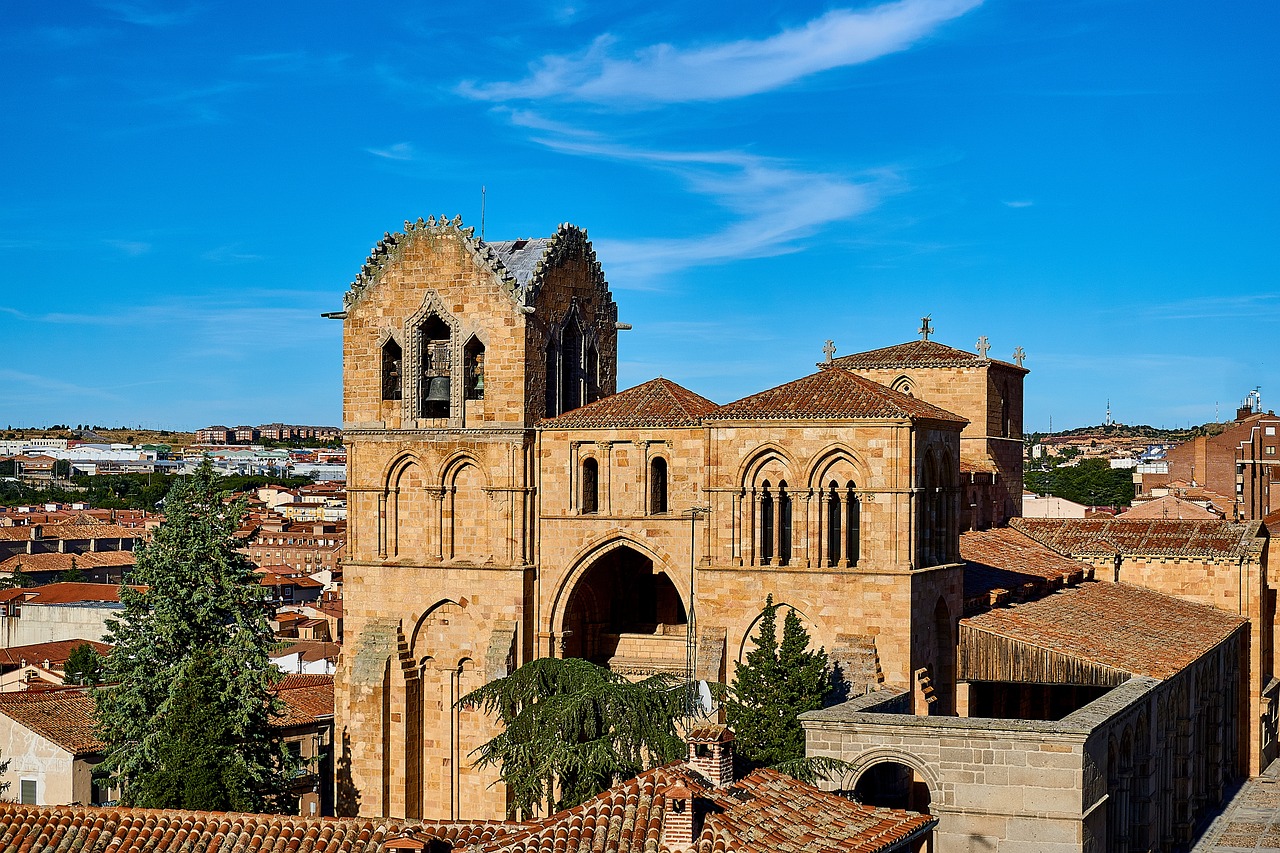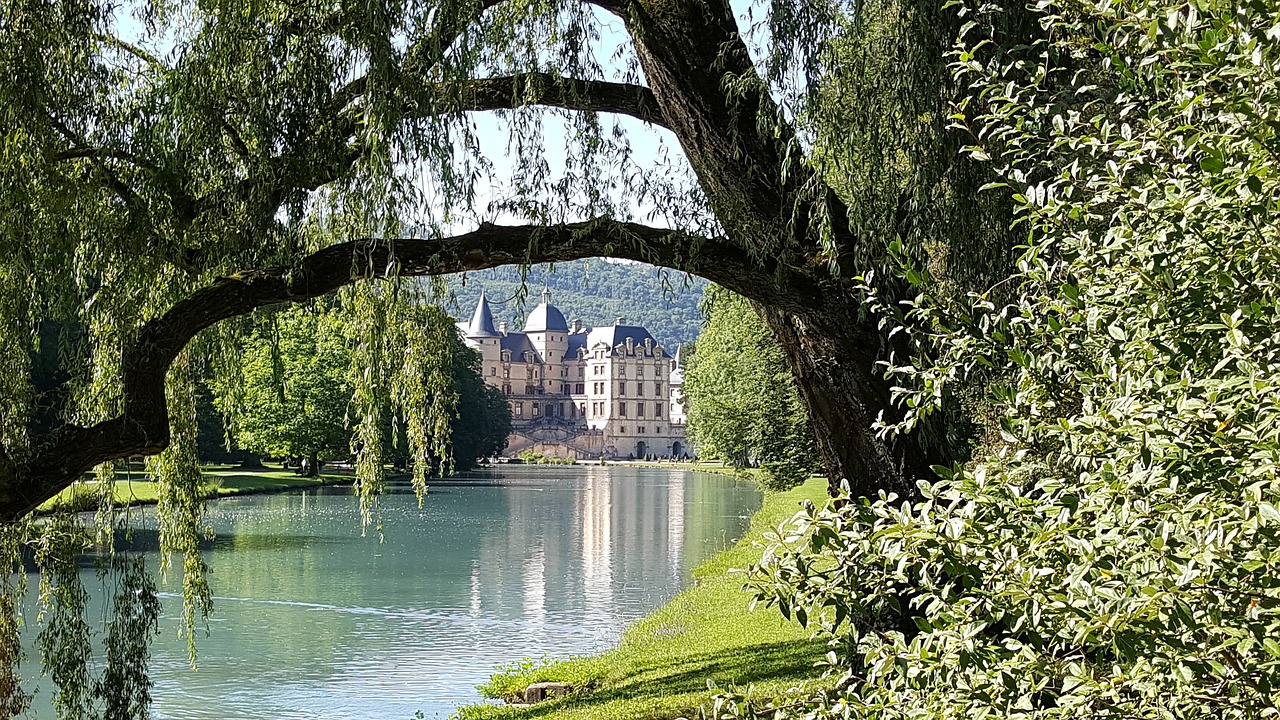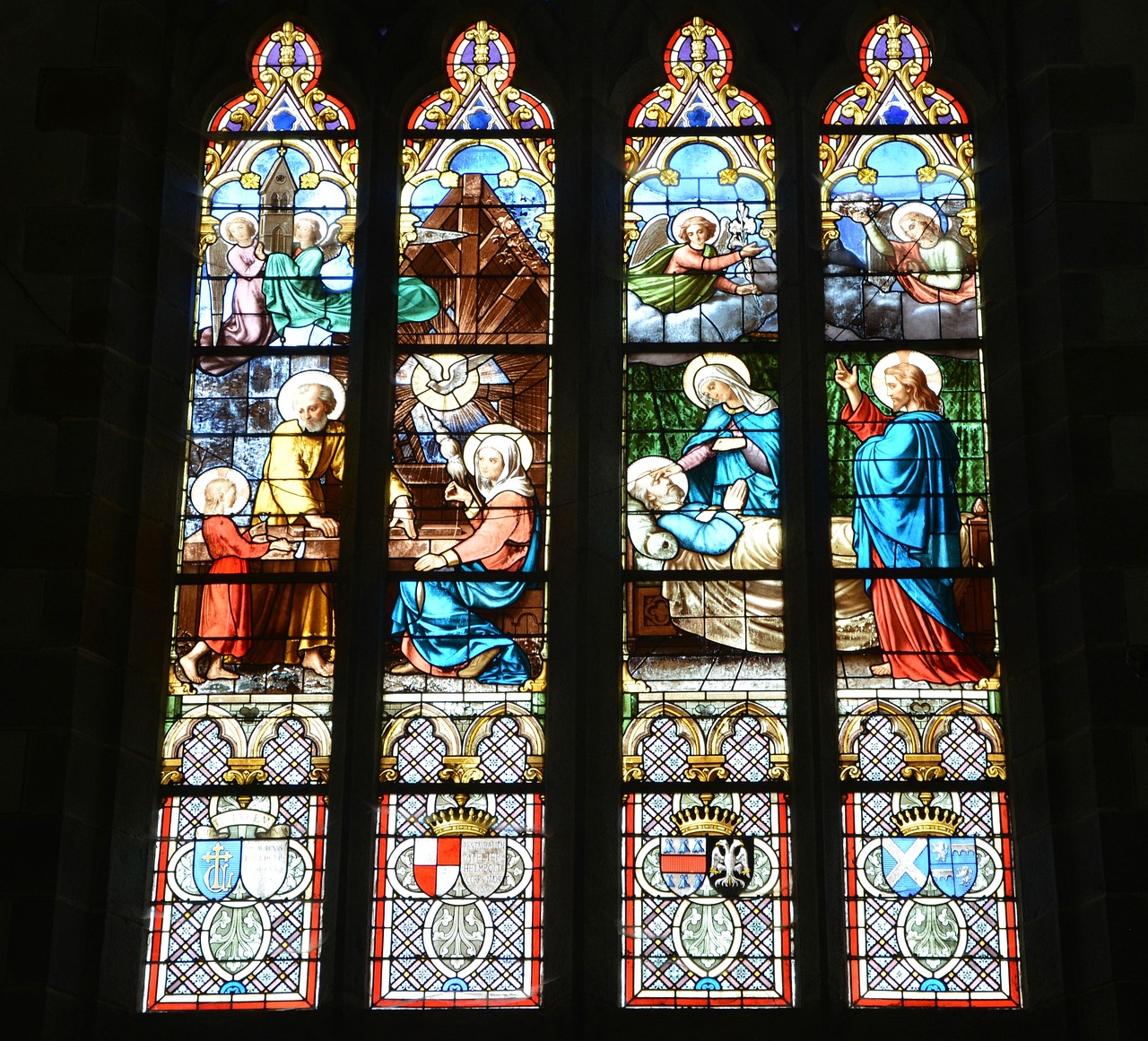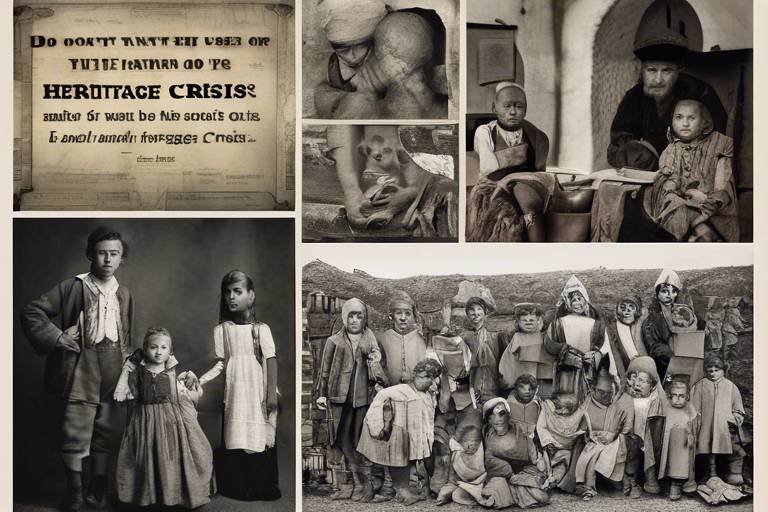How to Build a Community Around Heritage Preservation
Preserving cultural heritage is not just about safeguarding the past; it's about building a bridge to the future. The journey of heritage preservation begins with the community, where individuals and groups come together to protect and celebrate their shared history and traditions. By engaging in this collective effort, communities can create a legacy that will endure for generations to come.
Building a community around heritage preservation requires a multifaceted approach that combines passion, creativity, and collaboration. It's not just about preserving old buildings or artifacts; it's about fostering a sense of pride and belonging among community members. By understanding the importance of heritage preservation, we can unlock the potential to create a vibrant and culturally rich community.
One of the key strategies for engaging stakeholders in heritage preservation is to involve local residents in decision-making processes. When community members feel a sense of ownership and responsibility for their heritage, they are more likely to actively participate in preservation efforts. Additionally, forming partnerships with organizations and government bodies can provide valuable resources and support for heritage preservation initiatives.
Technology plays a crucial role in heritage preservation by providing innovative ways to document, promote, and share cultural heritage. Digital tools, social media platforms, and online resources can amplify the reach and impact of heritage preservation efforts, making it more accessible and engaging for a wider audience. Leveraging technology can also help bridge the gap between different generations and facilitate intercultural exchange.
Organizing heritage preservation events is an effective way to raise awareness and mobilize community members around a common cause. These events can take various forms, from heritage walks and exhibitions to workshops and festivals. By creating opportunities for people to actively participate in preserving their heritage, these events can spark interest and enthusiasm for cultural conservation.
Educational programs are essential for instilling a sense of appreciation and stewardship for cultural heritage among community members, especially the younger generation. By offering workshops, lectures, and hands-on activities, educational initiatives can empower individuals with the knowledge and skills needed to actively contribute to heritage preservation efforts.
Collaborating with cultural institutions such as museums, libraries, and historical societies can provide valuable expertise and resources for heritage preservation projects. By partnering with these institutions, communities can access collections, archives, and research facilities that can enhance their understanding of local history and heritage. These collaborations can also help raise awareness about the importance of cultural preservation among a broader audience.
Securing funding for heritage preservation projects is often a challenging but crucial aspect of sustaining long-term conservation efforts. Communities can explore various sources of funding, including grants, sponsorships, and crowdfunding campaigns. By developing a clear funding strategy and engaging with potential donors and sponsors, communities can ensure the financial sustainability of their heritage preservation initiatives.
Evaluating the impact of heritage preservation efforts is essential for measuring success and identifying areas for improvement. By collecting data, feedback, and testimonials from community members, organizations can assess the effectiveness of their projects and initiatives. This evaluation process can help guide future decision-making and ensure that heritage preservation efforts continue to make a meaningful impact within the community.

Understanding the Importance of Heritage Preservation
Exploring strategies and techniques for engaging individuals and groups in the preservation and celebration of cultural heritage within a community.
Preserving cultural heritage is like safeguarding a time capsule filled with the essence of our ancestors. It is a way of honoring our roots, traditions, and stories, ensuring that they are not lost in the whirlwind of modernization. By cherishing our heritage, we preserve the unique identity and soul of our community for generations to come.
When it comes to heritage preservation, the power lies in unity. Engaging local residents, community organizations, and governmental bodies is crucial for creating a collective effort towards safeguarding our cultural legacy. By involving stakeholders at every level, we can build a strong foundation for sustainable preservation initiatives.
In today's digital age, technology serves as a powerful ally in the realm of heritage preservation. From interactive websites and social media campaigns to virtual tours and digital archives, leveraging technology can amplify the reach and impact of our preservation efforts. Embracing digital tools allows us to bridge the gap between the past and the present, making heritage more accessible and engaging for all.
Events have the magical ability to bring people together and ignite a spark of curiosity and appreciation. By organizing heritage preservation events such as cultural festivals, workshops, and exhibitions, we can create immersive experiences that inspire community members to actively participate in safeguarding their heritage. These events serve as platforms for education, celebration, and collective action.
Education is the key to fostering a deep sense of connection and responsibility towards heritage preservation. Developing educational programs that raise awareness about the value of cultural heritage and the importance of conservation is essential for nurturing a generation of heritage stewards. By imparting knowledge and instilling pride in our heritage, we empower individuals to become advocates for preservation.
Cultural institutions like museums, libraries, and historical societies are treasure troves of knowledge and resources that can enrich our heritage preservation endeavors. By forging partnerships with these institutions, we can tap into their expertise, collections, and networks to amplify the impact of our preservation projects. Collaborating with cultural guardians ensures that our heritage is safeguarded with care and expertise.
Turning dreams of heritage preservation into reality often requires financial support. Identifying funding sources, applying for grants, and engaging in fundraising activities are essential steps in securing the resources needed to sustain preservation projects. By demonstrating the value and impact of our initiatives, we can attract financial support from individuals, organizations, and government agencies dedicated to preserving heritage.
Measuring the success of heritage preservation initiatives is vital for assessing their effectiveness and guiding future actions. By evaluating the impact of community-led projects through metrics such as visitor numbers, engagement levels, and conservation outcomes, we can refine our strategies and ensure that our efforts are making a tangible difference in preserving our cultural heritage.

Engaging Stakeholders in Heritage Preservation
Exploring strategies and techniques for engaging individuals and groups in the preservation and celebration of cultural heritage within a community.
Highlighting the significance of preserving cultural heritage for future generations and the identity of a community.
When it comes to heritage preservation, engaging stakeholders is crucial for the success of any initiative. Stakeholders can include local residents, community organizations, historical societies, local businesses, government bodies, and more. By involving these diverse groups, a sense of ownership and pride in preserving cultural heritage can be fostered within the community.
Exploring the role of digital tools, social media, and online platforms in promoting and preserving cultural heritage.
Tactics for planning and executing events that raise awareness and foster community involvement in heritage preservation.
Developing educational initiatives to teach community members about the importance of preserving cultural heritage.
Building partnerships with museums, libraries, and other cultural institutions to support heritage preservation efforts.
Strategies for identifying and securing financial resources to fund heritage preservation initiatives within the community.
Measuring the success and effectiveness of community-led heritage preservation projects and initiatives.

Utilizing Technology for Heritage Preservation
Utilizing technology plays a crucial role in the preservation of cultural heritage, offering innovative ways to engage communities and individuals in the process. Digital tools, social media platforms, and online resources have transformed the way we interact with and safeguard our heritage. By harnessing the power of technology, heritage preservation efforts can reach a wider audience and create lasting impacts.
One of the key benefits of technology in heritage preservation is the ability to digitize and archive cultural artifacts and historical documents. Through digital preservation, valuable heritage materials can be safeguarded for future generations, ensuring their longevity and accessibility. Virtual tours, online exhibitions, and interactive websites enable people from around the world to explore and appreciate cultural heritage without physical limitations.
Moreover, social media platforms provide a dynamic space for sharing stories, promoting events, and connecting with a diverse audience interested in heritage preservation. By leveraging social media channels such as Facebook, Instagram, and Twitter, communities can raise awareness, solicit feedback, and mobilize support for preservation initiatives. These platforms facilitate real-time communication and engagement, fostering a sense of community among heritage enthusiasts.
Online platforms dedicated to heritage preservation offer valuable resources and tools for researchers, educators, and preservationists. From digital archives to educational materials, these platforms serve as repositories of knowledge and best practices in heritage conservation. By tapping into these online resources, communities can access information, collaborate on projects, and stay informed about the latest developments in the field.
Furthermore, technology enables the creation of immersive experiences that bring heritage sites and artifacts to life through virtual reality, augmented reality, and interactive multimedia. By incorporating these technologies into heritage preservation initiatives, communities can engage visitors in unique and memorable ways, fostering a deeper appreciation for cultural heritage. Virtual reconstructions, 3D modeling, and interactive exhibits offer new perspectives on historical sites and artifacts, enriching the visitor experience and sparking interest in heritage conservation.

Organizing Heritage Preservation Events
Organizing heritage preservation events is a crucial aspect of engaging the community and raising awareness about the importance of safeguarding cultural heritage. These events serve as platforms for bringing together individuals, groups, and organizations with a shared interest in preserving the heritage of a community. By carefully planning and executing these events, organizers can create impactful experiences that resonate with attendees and inspire them to take an active role in heritage preservation.
One effective strategy for organizing heritage preservation events is to collaborate with local cultural institutions, such as museums or historical societies. These partnerships can provide access to valuable resources, expertise, and historical artifacts that can enhance the event experience and lend credibility to the cause of heritage preservation. Additionally, involving cultural institutions can help attract a broader audience and establish the event as a reputable and educational opportunity for the community.
Furthermore, incorporating interactive elements into heritage preservation events can significantly increase engagement and participation. Activities such as guided tours, hands-on workshops, storytelling sessions, and cultural performances can create memorable experiences for attendees and foster a deeper connection to the heritage being celebrated. By offering diverse and engaging activities, organizers can cater to different interests within the community and ensure a well-rounded event experience.
Effective communication and promotion are also key factors in successfully organizing heritage preservation events. Utilizing social media platforms, community newsletters, local newspapers, and online event listings can help reach a wider audience and generate excitement and anticipation for the upcoming event. By creating visually appealing promotional materials and sharing compelling stories about the significance of the heritage being preserved, organizers can attract more attendees and create a buzz around the event.
Moreover, incorporating elements of inclusivity and accessibility in event planning is essential for ensuring that heritage preservation events resonate with a diverse audience. Providing options for different languages, offering wheelchair accessibility, and considering the needs of individuals with disabilities can make the event more welcoming and inclusive. By creating a welcoming and accommodating environment, organizers can encourage broader participation and ensure that everyone feels valued and included in the preservation efforts.
In conclusion, organizing heritage preservation events requires careful planning, collaboration, creativity, and a deep commitment to preserving the cultural heritage of a community. By engaging with local stakeholders, leveraging partnerships with cultural institutions, offering interactive and inclusive activities, and effectively promoting the event, organizers can create meaningful experiences that inspire community members to actively participate in heritage preservation efforts.

Creating Educational Programs on Heritage Preservation
When it comes to , it is essential to tailor the content to engage and educate community members effectively. These programs serve as valuable tools for raising awareness about the importance of preserving cultural heritage and instilling a sense of pride and responsibility within the community.
One effective approach is to design interactive workshops that allow participants to immerse themselves in various aspects of heritage preservation. By incorporating hands-on activities, storytelling sessions, and guided tours, these workshops can offer a dynamic and engaging learning experience.
Additionally, collaborating with local schools to integrate heritage preservation into the curriculum can have a lasting impact on young learners. By working closely with educators, educational programs can be developed to align with academic standards while fostering a deeper appreciation for cultural heritage.
Furthermore, leveraging digital platforms to deliver educational content can reach a broader audience and make heritage preservation more accessible. Online resources such as virtual tours, video documentaries, and interactive quizzes can enhance the learning experience and cater to diverse learning styles.
It is also crucial to involve community members in the development and implementation of educational programs. By soliciting input and feedback from residents, organizations, and cultural institutions, the content can be tailored to address specific interests and needs within the community.
Moreover, establishing partnerships with local experts, historians, and heritage professionals can lend credibility and expertise to educational programs. By tapping into the knowledge and experience of these individuals, the content can be enriched and offer valuable insights into heritage preservation practices.
In conclusion, creating educational programs on heritage preservation requires a thoughtful and strategic approach to engage and educate the community effectively. By incorporating interactive elements, collaborating with schools, leveraging digital platforms, involving community members, and establishing partnerships, these programs can play a vital role in fostering a greater appreciation for cultural heritage and promoting its preservation for future generations.

Collaborating with Cultural Institutions
Collaborating with cultural institutions is a crucial aspect of heritage preservation efforts within a community. By partnering with museums, libraries, and other cultural organizations, communities can access valuable resources, expertise, and support to enhance their preservation initiatives. These institutions often house significant historical artifacts, documents, and knowledge that can greatly contribute to the preservation and celebration of cultural heritage.
Through collaboration, community-led heritage preservation projects can benefit from the credibility and authority that cultural institutions bring. By working together, communities can leverage the reputation and visibility of these institutions to raise awareness, attract more participants, and secure additional funding for their preservation endeavors.
Furthermore, cultural institutions can offer educational programs, workshops, and exhibitions that complement community-led efforts in heritage preservation. These initiatives not only educate the public about the importance of preserving cultural heritage but also create engaging experiences that foster a deeper connection to the community's history and traditions.
Building partnerships with cultural institutions also opens up opportunities for joint events and activities that showcase the rich heritage of the community. Collaborative projects such as heritage walks, exhibitions, and cultural festivals can draw diverse audiences and create a sense of pride and unity among community members.
Moreover, cultural institutions often have networks and connections that can help heritage preservation projects reach a wider audience. By tapping into these networks, communities can amplify their message, attract more volunteers, and establish long-lasting relationships that support their preservation goals.

Securing Funding for Heritage Preservation Projects
Exploring strategies and techniques for engaging individuals and groups in the preservation and celebration of cultural heritage within a community.
Securing adequate funding is crucial for the success of heritage preservation projects. It requires a strategic approach that involves identifying potential funding sources, creating compelling proposals, and building partnerships with stakeholders.
One effective strategy is to diversify funding sources to reduce reliance on a single channel. This can involve seeking grants from government agencies, foundations, or corporate sponsors. Additionally, crowdfunding platforms can be utilized to engage the community and raise funds for specific projects.
Developing a detailed budget is essential to demonstrate the financial needs of the preservation project. This includes outlining expenses for research, conservation efforts, public engagement activities, and administrative costs. Transparent budgeting helps potential donors understand how their contributions will be utilized.
Collaborating with local businesses and organizations can also be a valuable way to secure funding. Sponsorship opportunities, in-kind donations, or fundraising events can help generate financial support while fostering relationships within the community.
Furthermore, leveraging partnerships with heritage organizations and cultural institutions can open doors to additional funding opportunities. These collaborations can lead to joint grant applications, shared resources, and increased visibility for preservation initiatives.
Regularly evaluating the financial sustainability of heritage preservation projects is essential. Monitoring expenses, tracking donations, and assessing the impact of funding efforts are key aspects of ensuring long-term success and continuity of preservation activities.
In conclusion, securing funding for heritage preservation projects requires a proactive and multifaceted approach. By engaging with diverse funding sources, creating transparent budgets, fostering partnerships, and maintaining financial accountability, communities can ensure the preservation of their cultural heritage for future generations.

Evaluating the Impact of Heritage Preservation Efforts
Exploring strategies and techniques for engaging individuals and groups in the preservation and celebration of cultural heritage within a community.
Highlighting the significance of preserving cultural heritage for future generations and the identity of a community.
Strategies for involving local residents, organizations, and government bodies in heritage preservation initiatives.
Exploring the role of digital tools, social media, and online platforms in promoting and preserving cultural heritage.
Tactics for planning and executing events that raise awareness and foster community involvement in heritage preservation.
Developing educational initiatives to teach community members about the importance of preserving cultural heritage.
Building partnerships with museums, libraries, and other cultural institutions to support heritage preservation efforts.
Strategies for identifying and securing financial resources to fund heritage preservation initiatives within the community.
Measuring the success and effectiveness of community-led heritage preservation projects and initiatives is crucial to understanding the impact of these efforts. By evaluating the outcomes of preservation projects, communities can assess their effectiveness in safeguarding cultural heritage for future generations. This evaluation process involves analyzing various aspects, such as community engagement levels, awareness raised, preservation of historical sites, and the overall cultural impact. Through data collection, surveys, and feedback mechanisms, stakeholders can gain insights into the effectiveness of their preservation efforts and make informed decisions for future initiatives.
Frequently Asked Questions
- What is heritage preservation?
Heritage preservation involves protecting and conserving cultural, historical, and natural resources for future generations. It aims to safeguard the identity and traditions of a community by maintaining and promoting its unique heritage.
- Why is heritage preservation important?
Heritage preservation is crucial for maintaining a sense of identity, fostering community pride, and passing down traditions to future generations. It helps to connect people to their roots, promote cultural diversity, and enhance the overall well-being of a community.
- How can individuals get involved in heritage preservation?
Individuals can contribute to heritage preservation by volunteering for local preservation projects, participating in community events, supporting heritage organizations, and advocating for the protection of cultural landmarks and traditions.
- What role does technology play in heritage preservation?
Technology plays a significant role in heritage preservation by providing digital tools for documentation, virtual tours of historical sites, online educational resources, and platforms for sharing and promoting cultural heritage. It helps to reach a wider audience and engage people in heritage conservation efforts.
- How can communities secure funding for heritage preservation projects?
Communities can secure funding for heritage preservation projects through grants, sponsorships, donations, crowdfunding, and partnerships with government agencies, businesses, and philanthropic organizations. Developing a solid fundraising strategy and highlighting the social and economic benefits of heritage preservation can attract financial support.



















